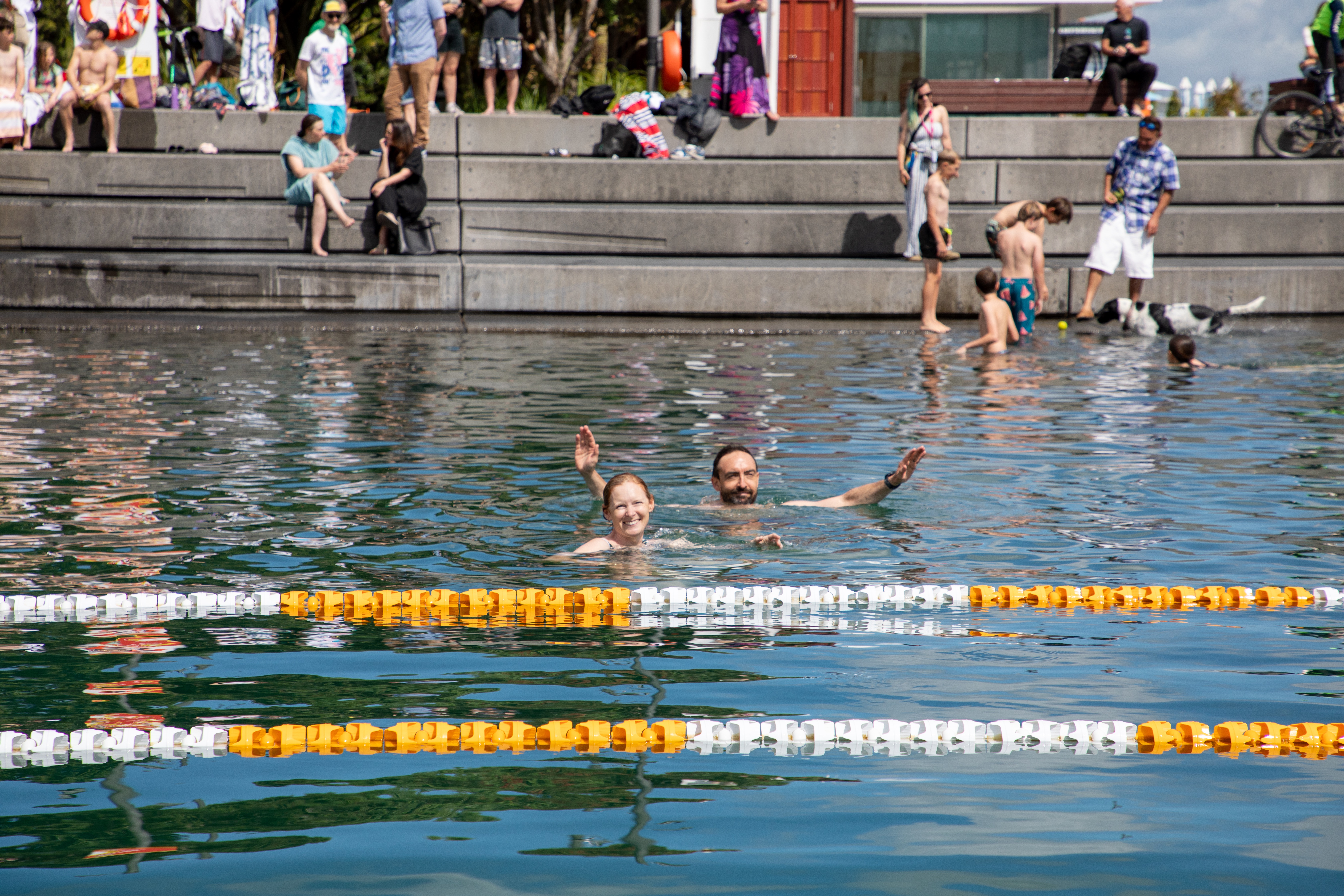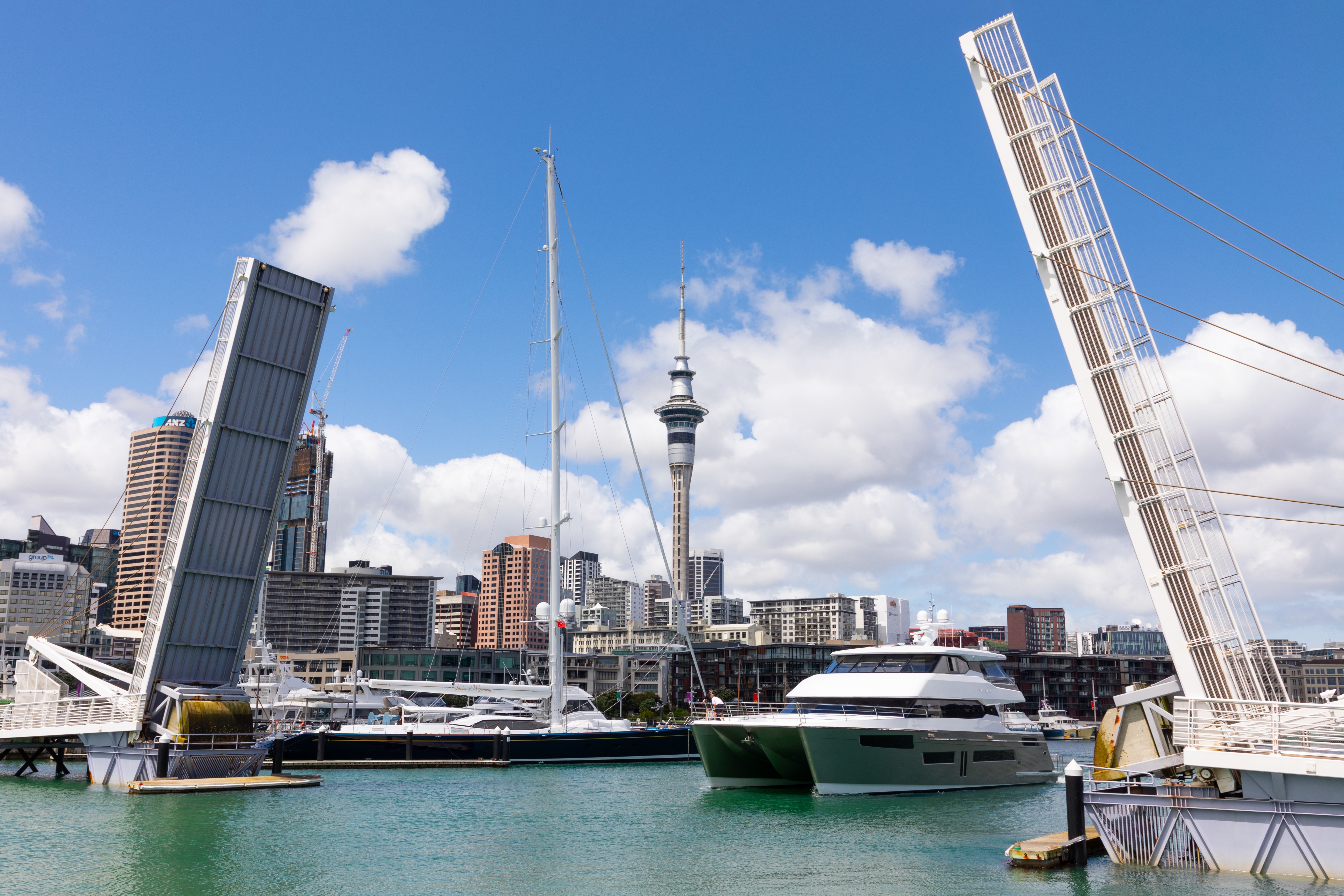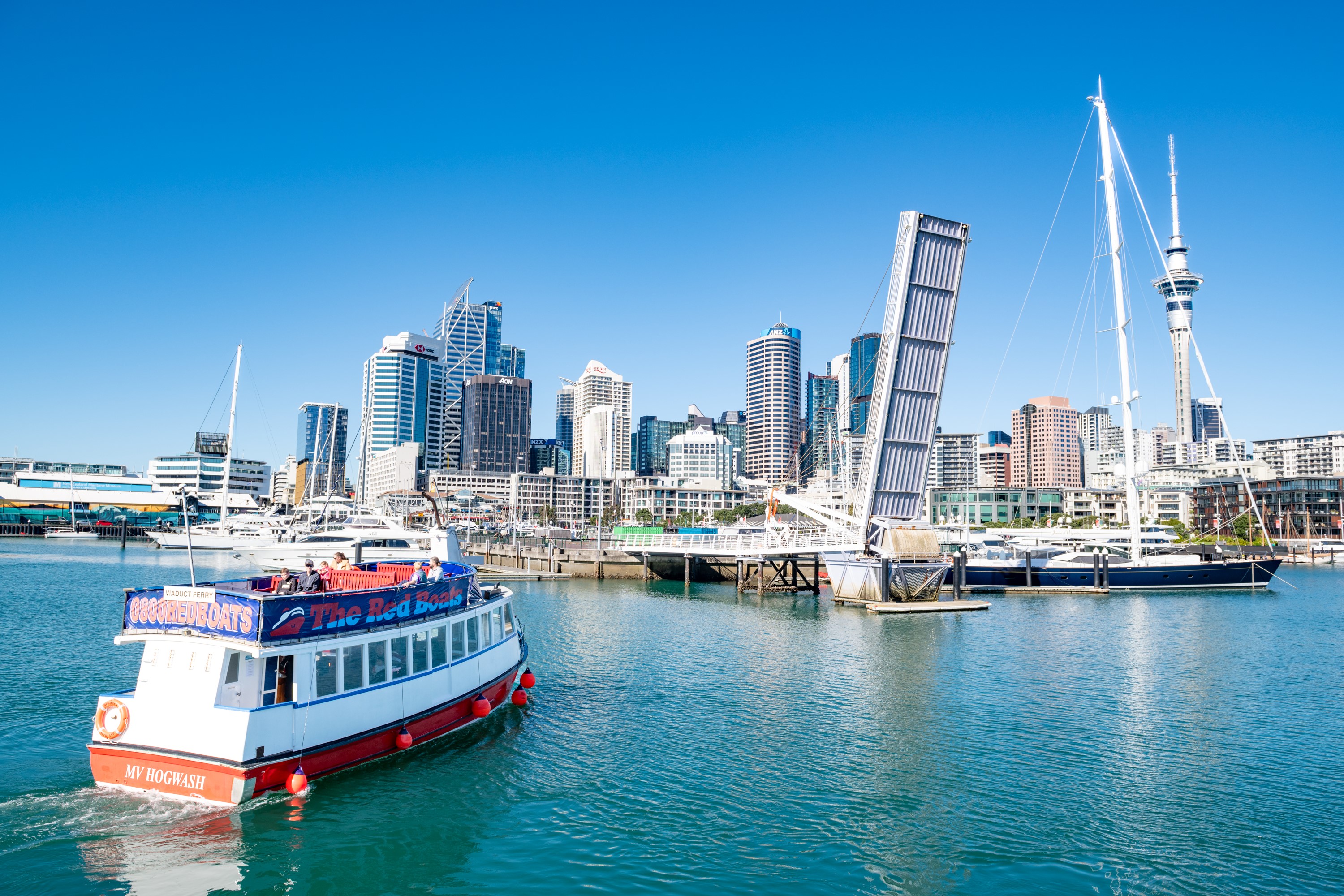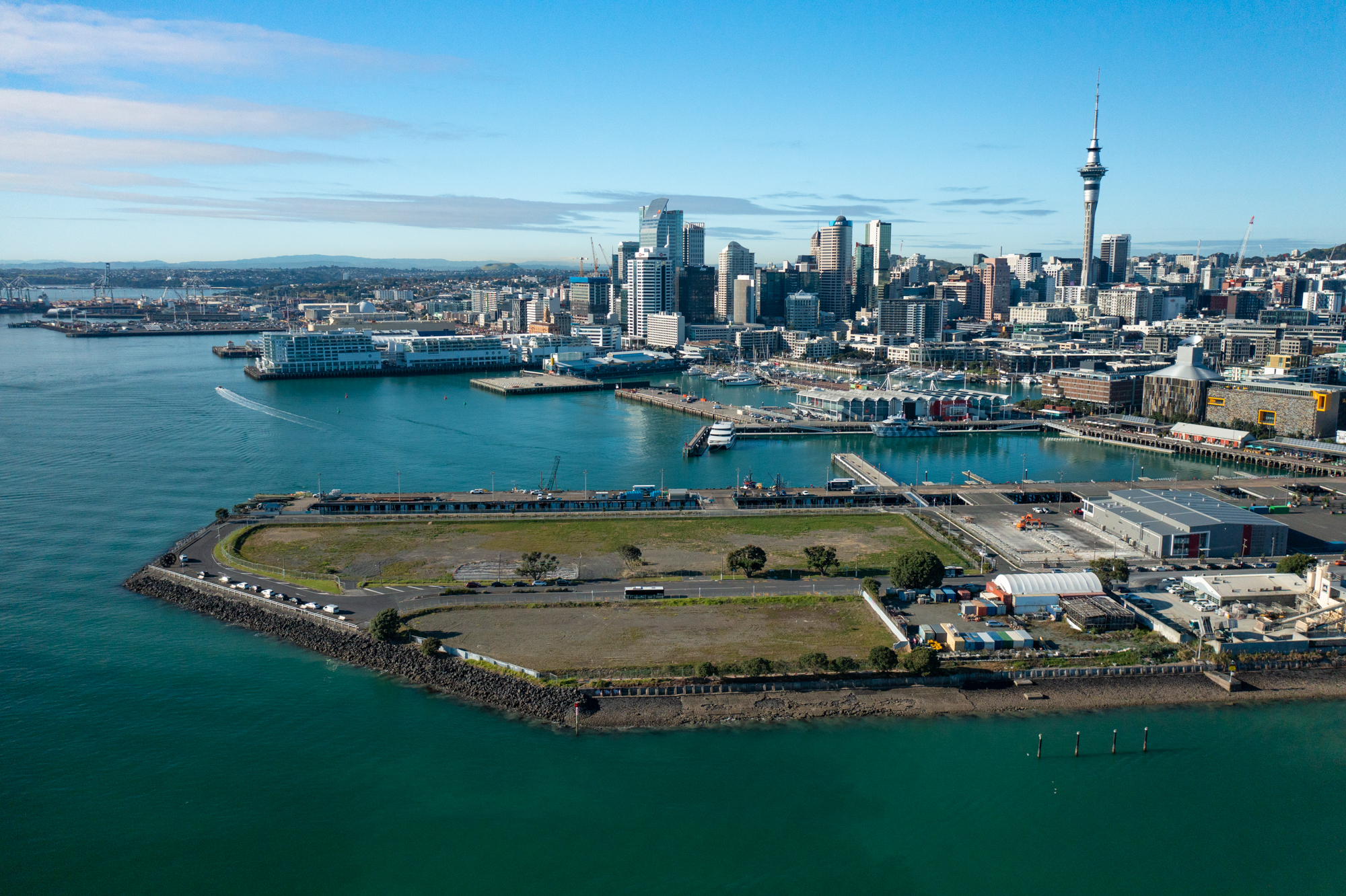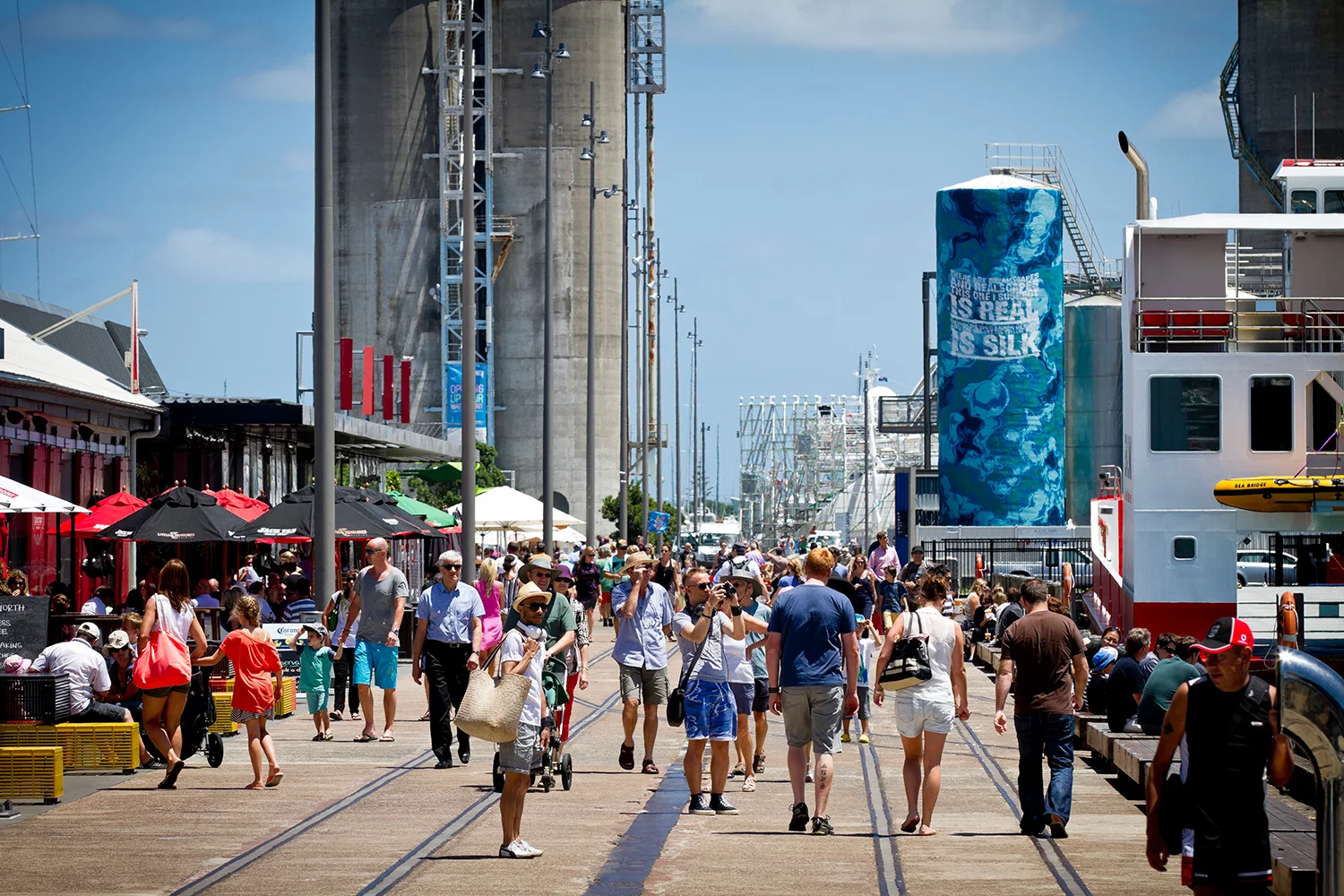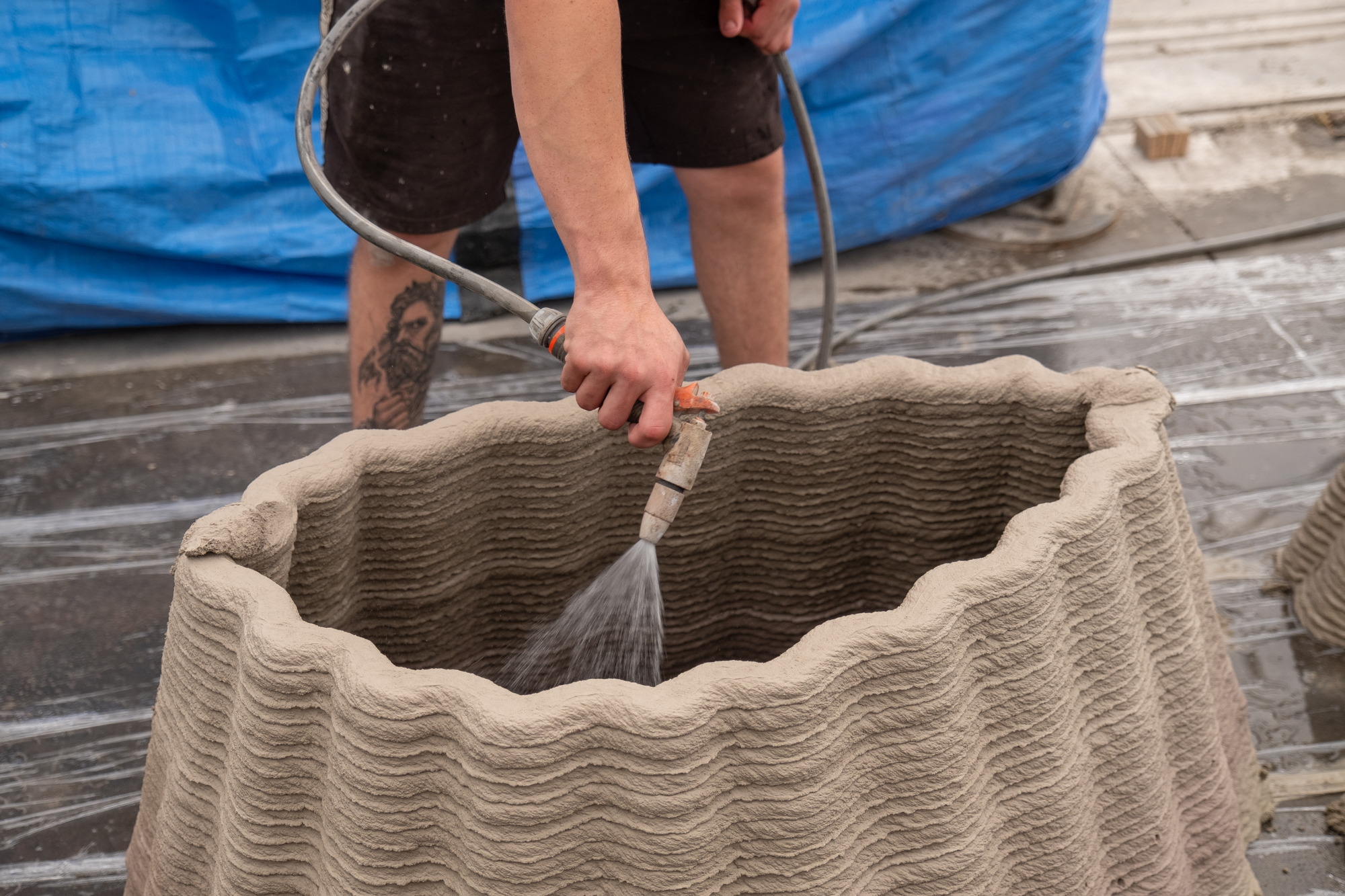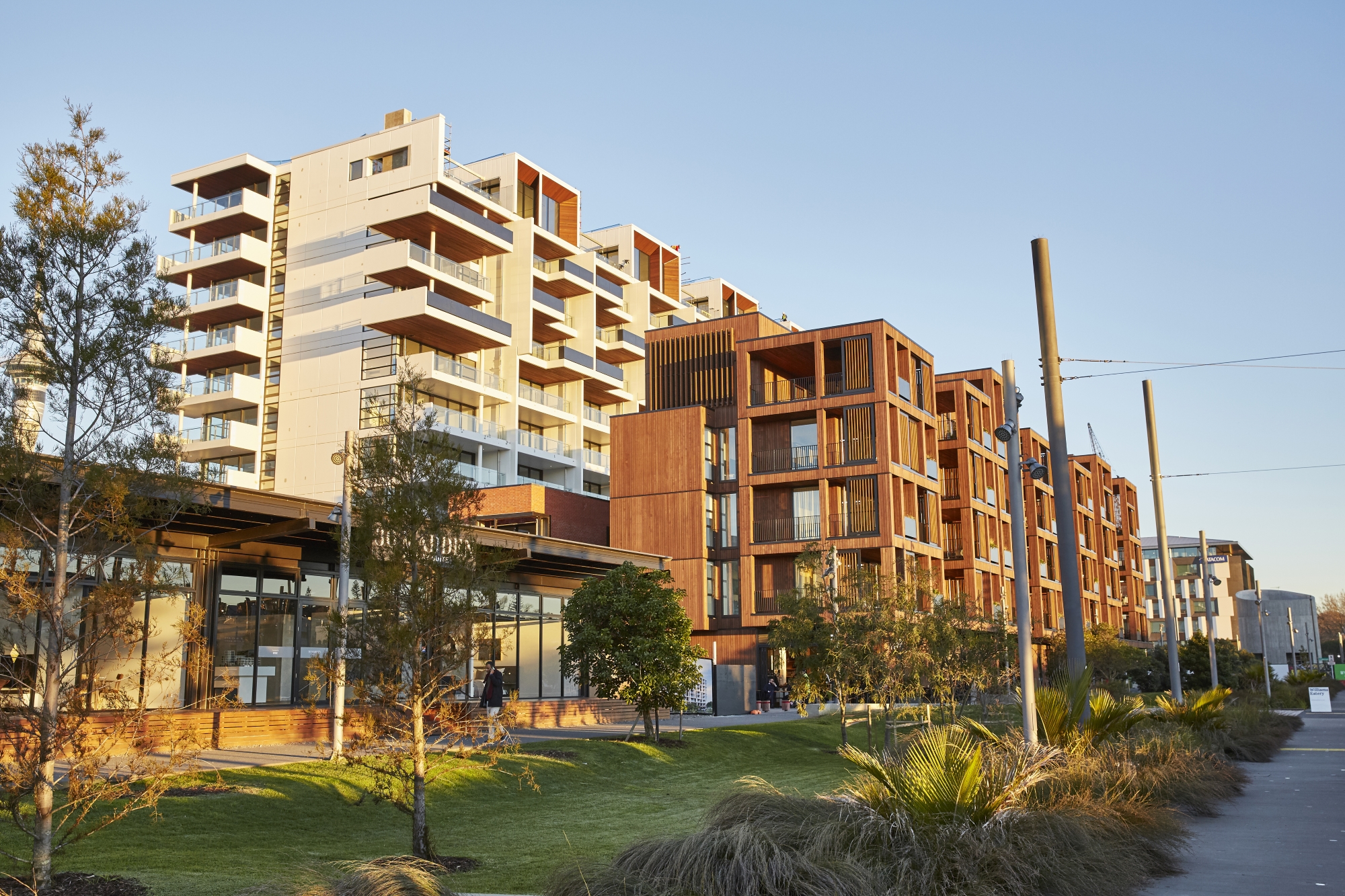Viaduct Bascule Bridge
March 2025 - June 2025
- Wynyard Quarter
- In Progress
Installed in 1932, the Viaduct Bascule Bridge is one of the few bridges of its type in the world.
The bridge was fabricated by the Cleveland Bridge and Engineering Co Ltd, Darlington, England.
It is a steel bascule rolling truss bridge. The Auckland Harbour Board installed it to span the 13.7m between the Eastern and Western Viaducts. It originally carried a railway connected to oil loading facilities on Wynyard Wharf and was raised and lowered at the arrival and departure of the fishing fleet.
It was manually operated and raised by rolling back 90° on its cam ends under counterweight. A pinion moved along a horizontal rack at the height of the centre of the cam-end circle. Later driven by electricity, it was in use until the development of the Maritime Museum on Hobson Wharf in 1992.
Now it’s used as a thoroughfare between Wynyard Quarter and the city centre and has been preserved for its engineering heritage value.
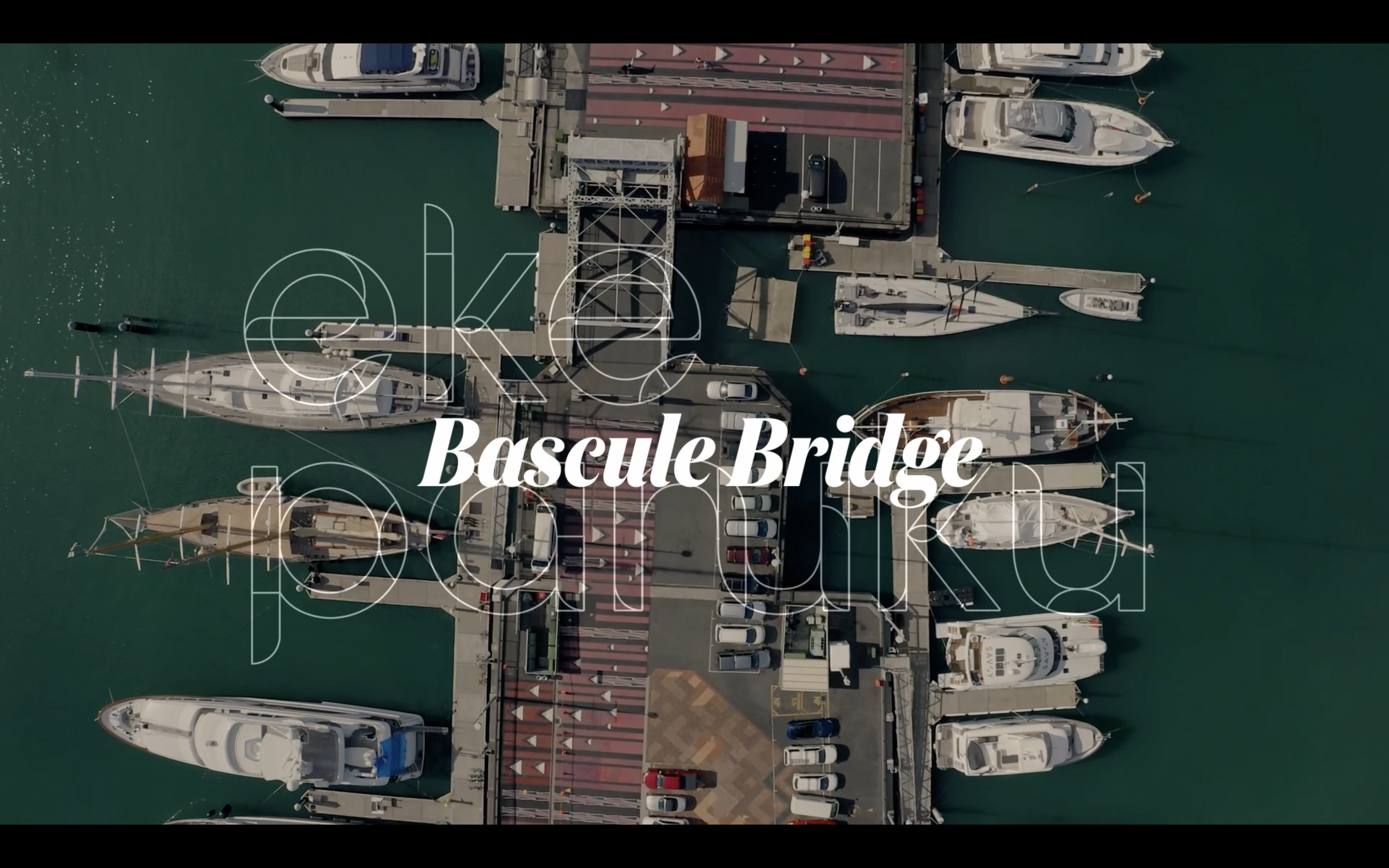
Extending its lifespan
Deck replacement
Because the Viaduct Bascule Bridge is now over 90 years old, its decking had to be completely replaced in 2023. This will extend the deck's lifespan by a further 50 years or more.
Viaduct Bascule Bridge maintenance in progress
Essential maintenance is being undertaken on the Viaduct Bascule Bridge’s upper structure to ensure its ongoing reliable and safe operation. This work includes removing the existing protective coating, addressing corrosion and applying a new protective membrane. It will take place from March to June 2025.
While the works take place pedestrian access will remain between the Viaduct and Te Wero island via two pedestrian bridges.
Overview of work March – June 2025:
- Site establishment: 17 March until early April. This will include installing a car park/loading zone area in front of the bridge, fabrication and installation of two one-way temporary scaffold bridges, establishing the worksite and scaffolding and plastic wrapping the Bascule Bridge.
- Site works: Works will be completed in three sections. Surface preparation will be the noisiest work and is expected to be carried during the weeks beginning 7 April, 24 April and 12 May. Mitigation measures will be in place such as attaching a silencer to the blast nozzle and using acoustic screening panels and will not exceed permitted noise limits. The rest of the work involves masking and painting.
- Disestablishing the site: Site clean-up and removal of the temporary bridges and wrap in June 2025.
Frequently asked questions:
- Will the work be noisy?
The blasting works to remove old paint and rust will create some noise. Mitigation measures will be in place and we will work within the consented noise limits of 70-90 decibels. - What are the hours of work?
Work will generally occur from Monday to Saturday, between 7:30 – 18:00. - What about access to Te Wero Island?
Pedestrian access to Te Wero Island will remain open via two temporary pedestrian bridges. Vehicle access will be removed but berth holders with car parks will be relocated to Hobson Wharf or Halsey Wharf.






